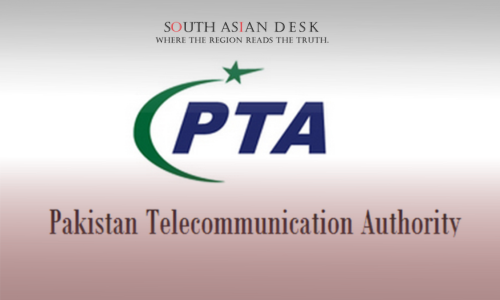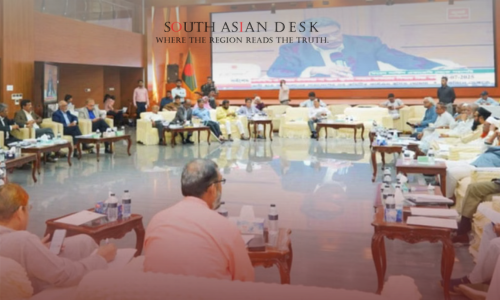India’s chief economic adviser has expressed optimism about a potential reduction in US India tariffs 2025 on goods, amid recent diplomatic engagements between the two nations.
India’s chief economic adviser, V Anantha Nageswaran, indicated on Wednesday, September 18, 2025, in Kolkata that the United States could soon remove the 25% penal tariff on Indian imports under the US India tariffs 2025 framework, as bilateral trade talks progress positively in New Delhi to address strains linked to India’s energy imports from Russia and the ongoing Ukraine conflict.
Why It Matters
The US India tariffs 2025 developments hold significant implications for South Asia’s economy, where India’s export-driven sectors support millions of jobs and regional supply chains. A resolution could stabilise trade flows, boost investor confidence, and mitigate inflationary pressures across neighbouring countries reliant on Indian manufacturing and services.
India Economic Adviser on US Tariffs Outlook
V Anantha Nageswaran, serving as India’s chief economic adviser, shared his views during an event organised by the Bharat Chamber of Commerce in Kolkata. He conveyed personal confidence that a solution to the extra 25% penal tariff imposed by the US could emerge within the next couple of months, potentially as early as November 30, 2025. This would align with broader efforts to recalibrate US India tariffs 2025.
Nageswaran further suggested that the reciprocal tariff rate, currently at 25%, might decrease to between 10% and 15%. Such adjustments, he noted, could restore pre-escalation trade conditions and foster stronger economic ties. His remarks followed a period of heightened tensions, prompting a positive response in financial markets; India’s benchmark Nifty 50 index reached a one-week high, closing at its strongest level since July 9, 2025.
The India economic adviser US tariffs comments underscore ongoing negotiations aimed at resolving disputes. Analysts anticipate that lower tariffs could benefit key Indian export sectors, including textiles, gems, and chemicals, which faced disruptions due to the recent hikes.
Recent Bilateral Engagements
Trade discussions between Indian and US officials took place in New Delhi on Tuesday, September 16, 2025. A delegation from the Office of the United States Trade Representative, led by Assistant US Trade Representative Brendan Lynch, met with counterparts headed by India’s Chief Negotiator Rajesh Agrawal.
According to an official statement from India’s commerce ministry, the talks were described as “positive” and “forward-looking.” Both sides agreed to intensify efforts towards an early conclusion of a mutually beneficial trade agreement. This marks a shift from earlier stalled negotiations, which had collapsed in August 2025 amid disagreements over market access and energy policies.
On the same day, US President Donald Trump and Indian Prime Minister Narendra Modi held a phone conversation, their first in three months. Trump extended birthday wishes to Modi ahead of his 75th birthday on Wednesday, September 17, 2025, and expressed appreciation for Modi’s assistance in efforts to end the war between Russia and Ukraine. According to the Prime Minister’s Office, Modi reaffirmed commitment to enhancing the India-US comprehensive global partnership and supported initiatives for a peaceful resolution in Ukraine.
This diplomatic exchange signals a potential thaw in relations strained by the US India tariffs 2025 escalations. Trump had previously voiced optimism about finalising a trade deal, adopting a more conciliatory approach in recent statements.
Background
The tariff tensions originated on Wednesday, August 27, 2025, when the Trump administration imposed an additional 25% punitive duty on Indian imports, effectively doubling overall tariffs to 50% on various goods. This measure targeted India’s continued purchases of Russian oil, part of Washington’s strategy to pressure Moscow over its invasion of Ukraine.
India’s government has defended its energy imports as essential for national security, rejecting accusations of profiting from the conflict. Preliminary data from India’s trade ministry, released on Sunday, September 15, 2025, showed merchandise exports to the US declining to $6.86 billion in August from $8.01 billion in July. Exporters have cautioned that the full impact of the US India tariffs 2025 will become evident from September onwards.
The US-India bilateral goods trade reached $129 billion in 2024, with India maintaining a surplus. However, the tariffs have raised concerns about job losses, estimated at up to 2 million in the short term, particularly in labour-intensive industries. India’s average tariff on US imports stands at around 7.5%, while US officials highlight higher rates on specific categories like agriculture.
What’s Next
As negotiations advance, stakeholders await concrete outcomes from the proposed sixth round of formal trade talks. A reduction in US India tariffs 2025 could pave the way for expanded cooperation, including in technology and defence, while addressing shared geopolitical concerns such as those involving China.
Looking ahead, the resolution of US India tariffs 2025 remains pivotal for sustaining economic momentum in the region.
Published in SouthAsianDesk, September 19th, 2025
Follow SouthAsianDesk on X, Instagram, and Facebook for insights on business and current affairs from across South Asia.






